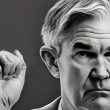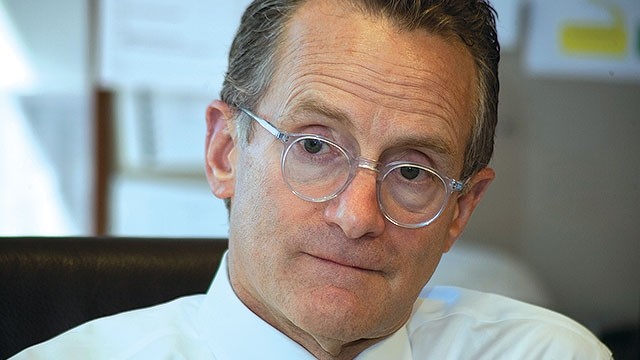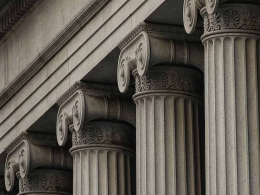Jeffrey Gundlach, the ever-skeptical maestro of macro at DoubleLine Capital, titled his June 10, 2025 webcast1 "Surreal"—a fitting descriptor for a world where economic signals defy logic, bond yields baffle expectations, and old models have seemingly lost their predictive power. Using surrealist art as both metaphor and framing device, Gundlach lays out a sobering—and at times jarring—portrait of today's investment landscape, marked by distorted relationships and regime shifts.
"We were at a secular bottom... and we may never get back to [a peak] until we have a total rollover of the maturities of all the Treasury bonds," Gundlach warns, citing the 58-month-long bond market drawdown—"the longest and deepest in modern history."
Inflation, Fed, and the "Not-a-Pipe" Moment
Gundlach opens with a metaphor: a sculpture of René Magritte by Marisol Escobar, and further references René Magritte's painting, The Treachery of Images— titled in French, This is not a pipe." It's the perfect allegory, he said, for today's economy, where things appear normal on the surface, but the relationships we've relied on "can no longer be mapped over to economic relationships today."
With four major inflation prints arriving just before the Fed's June meeting (last week)—including CPI, PPI, the employment cost index, and import/export prices—Gundlach sees no chance of a rate cut next week. "I'd put the chance at almost zero," he said.
"The Fed basically follows the two-year Treasury. The market leads. Always has," he asserted.
That has since come to pass. No rate cut in June.
So what’s in store now?
Base effects are about to kick in hard. "Inflation will probably end the year more at around 3%," he says, complicating the Fed's path forward. If the U3 unemployment rate drifts up to 4.5%, however, Gundlach expects rate cuts will follow.
A Yield Curve Screaming Recession
Bond yields have been locked in a range, but Gundlach points out an alarming steepening in the yield curve—not the inversion that headlines tend to trumpet, but its reversal:
"It's when [the curve] de-inverts that you really have to start getting concerned," he explains. "When the moving average of 2s/10s de-inverts, that's pretty much right on the front edge of a recession."
He also flags continuing jobless claims—"a more high-frequency signal"—as warning signs that the unemployment rate is poised to rise. Gundlach expects the job market to deteriorate further into the year, reinforcing the stagflation narrative.
Credit Spreads and Cracks in the CCCs
High yield and leveraged loan markets are flashing caution. The extra yield demanded for CCC-rated bonds relative to BBs has ticked above its long-term average—a classic harbinger of a credit event.
"This is often a leading indicator for a credit cycle," Gundlach says. "Triple-C leveraged loans are more vulnerable. The Fed hiked 525 basis points. That pain has to land somewhere."
Yet, in aggregate, spreads across most sectors look deceptively calm—"unchanged," as Gundlach says. The calm, however, belies the recent volatility of a round-trip: spreads widened sharply in April before reversing back by June.
Broken Models: A "Surreal" Regime Shift
More telling, Gundlach argues, is what's not happening.
- The dollar is weakening during equity corrections—an inversion of a 15-year trend.
- Treasury yields are rising even as inflation falls and the Fed pauses.
- Oil prices and bond yields, once tightly correlated, are now decoupled.
"These relationships have broken down," he says. "This is a regime change. The 40 years of declining interest rates will no longer be a template for market relationships going forward."
He pointed to a chilling chart overlay from Apollo—comparing the inflation path of the 1970s to today's. The lines are nearly identical.
"It's kind of surreal... It's close enough that it gives you a chill," he said. "I'm not predicting a rerun, but... wow."
Adding to the surreal nature: War has since broken out between Iran and Israel, and has now been further escalated by the White House opting to get directly involved with this weekend’s major tactical bombing operations of three Iranian nuclear facilities.
The Deficit Elephant: It's Worse Than You Think
One of the most jarring takeaways from Gundlach's presentation was the disconnect between unemployment and the federal budget deficit.
"This is absolutely surreal," he says. "We are living at an extremely low unemployment rate... and yet we have a high budget deficit. A deficit that looks like we have 7 or 8% unemployment."
The Congressional Budget Office (CBO), he reminds us, has a long track record of underestimating deficits. In 2001, the CBO projected a 6% surplus. The actual result? A 10% deficit.
"The CBO was off by 12 percentage points," he says flatly.
At 7.5% of GDP, today's deficit is already larger than that of 2022, 2023, and 2024—and Gundlach expects it will grow larger still, especially if a recession hits. "Every recession brings a bigger deficit. It's always been that way."
"We're Printing Like It's 2020"
Bond issuance in 2025 is running at the same pace as during the peak of COVID-era money printing—despite no emergency justification.
"We're issuing as much debt now as in the absolute height of the money printing," Gundlach says. "That's not really good news."
With the average rate on government debt rising from under 2% to nearly 4%, the Treasury faces a double whammy: higher debt stock and rising interest costs. This has knock-on effects, from exploding insurance premiums to tighter consumer spending.
Tariffs, Trade, and the Thin Fiscal Lifeline
Amid this storm, tariff revenue has picked up—doubling from $50B to $100B per month in recent data. Gundlach acknowledges it as "not insignificant," but cautions it's not enough to offset the broader fiscal problems.
"We may get $200 billion in tariffs this year," he says. "But if unemployment rises, that raises the need for a higher budget deficit despite the tariffs. We just don't know what the game plan is."
Gundlach's Trade of the Year: Go Ex-US
As the dollar enters what Gundlach sees as a secular decline, he reiterates his top conviction:
"I think the trade is to not own US stocks, but to own your stocks in the rest of the world. And it is certainly working."
Europe, he pointed out, is outperforming the S&P 500. Emerging markets are catching up. India, he said, remains his favourite long-term play.
"If the dollar declines versus local currencies and those markets outperform, you get a double-barreled win," he says.
He also flags a "bloodless verdict" from the market: massive capital flows into the US are now reversing. Foreign ownership of US assets surged from $3 trillion to over $25 trillion in the past 15 years.
"If that's reversing, then there's a lot of selling that can happen."
Final Frame: A Heavy Umbrella
Gundlach closed the presentation with an emotional nod to Marisol's sculpture Mi Mama y Yo—a haunting work showing the burden of a child shielding her mother with a heavy metal umbrella.
"She only spoke when absolutely necessary," Gundlach says, noting Marisol's trauma following her mother's suicide. "That umbrella—it's both protection and burden."
A fitting metaphor for investors in 2025: sheltering from volatility, but carrying a portfolio burdened by macro uncertainty, fiscal imbalance, and shifting paradigms.
TL;DR: Gundlach's Surreal Takeaways
- No Fed cut in June; inflation may end 2025 at ~3%
- Yield curve steepening = nearing recession signal
- Bond market in record drawdown—no recovery yet in sight
- Credit stress building in triple-C and leveraged loans
- Broken correlations: dollar, oil, yields no longer move in tandem
- Deficits growing despite strong employment—"unprecedented"
- Tariffs rising, but won't solve fiscal gap
- Best trade? Go international: ex-US equities, especially Europe and India
📌 Jeffrey Gundlach's "Surreal" webcast signals a regime shift for global investors. Stay tuned for DoubleLine’s follow-up coverage on emerging markets and the declining dollar trend.
Footnotes:
1 Capital, DoubleLine. "Jeffrey Gundlach: Surreal." YouTube, 10 June 2025













